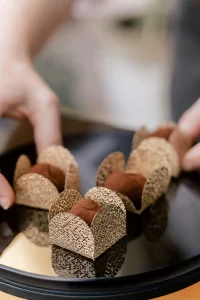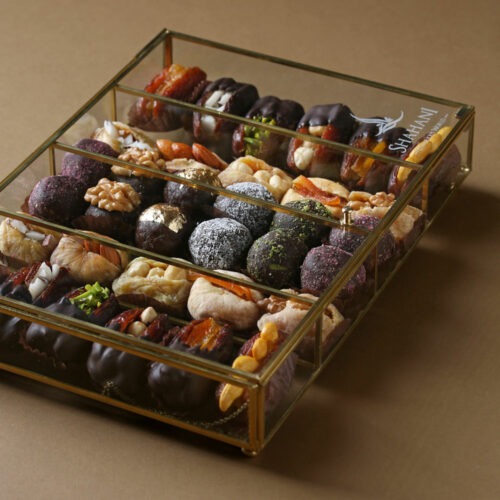Persian Truffles in Culinary Arts
Persian truffles, with their earthy aroma, elevate Iran’s culinary arts to new heights. Known as “denbalan,” these fungi add depth to dishes with their unique flavor. For instance, chefs use them in stews to create a luxurious taste for special occasions. This article explores how Persian truffles enhance Iranian cuisine, their cultural significance, and their health benefits. We’ll also dive into their foraging, preparation, and global appeal. As exporters of saffron, nuts, and more, we share Iran’s finest denbalan too. So, discover why these fungi are a culinary gem, how they’re used in Persian dishes, and why they’re cherished worldwide. Join us to explore this earthy delight and see what makes it a Persian kitchen treasure!
Introduction
Persian truffles bring an earthy aroma to Iran’s culinary arts, transforming dishes with their unique flavor. Iranians call these fungi “denbalan,” foraging them from desert regions, and they add depth to traditional recipes. Chefs and home cooks use this earthy gem to elevate meals for special occasions. We export saffron, nuts, and dates, but this isn’t just about trade—it’s about their role in Persian cuisine. Therefore, this article explores how Persian truffles enhance dishes, their cultural significance, and their health benefits. Let’s uncover this culinary delight!
Persian Truffles in Traditional Dishes
In Persian cuisine, chefs use Persian truffles to create unforgettable dishes. They often slice denbalan into stews, adding a rich, earthy flavor th
Denbalan in Modern Persian Recipes
Beyond traditional dishes, denbalan shines in modern Persian recipes. Chefs infuse this earthy gem into rice dishes, creating a gourmet version of polo for celebrations. They also blend Persian truffles into sauces for meats, adding depth to the flavor profile. Another recipe involves shaving denbalan over eggs for a breakfast treat. These modern creations often appear at upscale gatherings, showcasing culinary innovation. As a result, this earthy gem is a versatile ingredient in Iran.
How Foragers Harvest This Earthy Gem
Foragers carefully harvest this earthy gem to ensure it’s ready for culinary use. The process starts in spring, when desert rains encourage truffle growth underground. They search near plant roots, using trained dogs to sniff out denbalan. Then, they dig gently to unearth the fungi without damage. Finally, they clean the truffles to remove sand and dirt. This method keeps Persian truffles fresh for dishes across Iran.
Preparing Persian Truffles for Cooking
Cooks prepare Persian truffles to bring out their best in culinary creations. For instance, they slice denbalan thinly to release its aroma in stews. They also sauté this earthy gem with garlic and butter for a rich side dish. Another method involves grinding these fungi into a powder to season soups. Some even infuse truffle oil with denbalan for drizzling over dishes. Because of these preparations, this earthy gem enhances every meal.
Health Benefits of This Earthy Gem
This earthy gem offers health benefits that complement its culinary role. Persian truffles contain antioxidants, which support overall wellness during hearty meals. They also provide minerals like potassium, aiding heart health for feast-goers. Moreover, their fiber helps digestion after rich dishes, a relief for guests. Their natural compounds may even boost immunity, per studies. Therefore, adding denbalan to dishes means adding health to every bite.
Cultural Role of Denbalan in Cuisine
In Iran, denbalan holds a special cultural role in cuisine. Using Persian truffles in dishes symbolizes luxury, a tradition rooted in Persian feasts. Ancient stories mention this earthy gem in royal banquets, showcasing its prestige. Also, denbalan often appears in meals at Nowruz, representing abundance and joy. At weddings, these fungi signify a lavish celebration. Consequently, this earthy gem weaves tradition into Iran’s culinary arts.
Truffles and Iran’s Culinary Heritage
Iran’s culinary heritage thrives with this earthy gem. Foragers in desert regions like Kerman find Persian truffles, supporting communities who rely on them for dishes. Since they’re a rare ingredient, using denbalan in cuisine shows culinary pride. Bazaars buzz with sales of these fungi before holidays, delighting chefs. We export saffron, nuts, and these treasures, connecting them to Persian heritage. Thus, this earthy gem remains a cornerstone of Iran’s kitchen traditions.
Global Appeal of Persian Truffles
Around the world, people embrace this earthy gem in their own culinary arts. Its rich flavor makes it a favorite for global chefs creating gourmet dishes. For example, European cooks use Persian truffles in pasta, adding an Iranian twist. Also, global markets sell denbalan for upscale recipes, spreading its charm. In Asia, chefs shave these fungi over soups for special occasions. Iran shares this earthy gem worldwide, so its culinary appeal grows.
Challenges with Using This Fungi
Using this fungi for cooking can face hurdles. Harsh desert conditions, for instance, limit truffle growth, reducing supply for chefs. Over-foraging also threatens denbalan populations, impacting availability. Additionally, cleaning Persian truffles properly takes skill to avoid grit in dishes. However, Iran ensures these fungi remain available for culinary traditions. This effort keeps the heritage alive despite challenges.
Opportunities to Share Culinary Denbalan
The future offers chances to expand these culinary traditions. This earthy gem in gourmet kits could, for example, become a global trend for chefs. Creating denbalan-based seasonings for international markets is another idea. Furthermore, cooks worldwide could buy these fungi online for their recipes, extending their reach. We’re committed to sharing these treasures for global cuisine. So, these opportunities ensure this earthy gem has a flavorful future ahead.
How to Choose the Best Persian Truffles
Looking for the best denbalan for your dishes? Check for a firm texture—they shouldn’t feel soft, ensuring freshness. Also, look for a strong earthy aroma, a sign of quality for cooking. Taste them for a rich, savory flavor, perfect for recipes. Source them from us because we guarantee the best denbalan for your needs. This way, you’ll have top-quality fungi for every culinary creation.
Truffles in Global Culinary Practices
Globally, this earthy gem enhances dishes in unique ways. In Iran, for instance, cooks use denbalan in stews to celebrate Nowruz with depth. European chefs add these fungi to risottos for a luxurious touch. In Asia, people shave this earthy gem over noodles for festive meals, delighting guests. You can also use denbalan in omelets for a gourmet breakfast. These practices show how Persian truffles bring flavor to global cuisine.
The Future of This Earthy Gem in Cuisine
Looking ahead, this earthy gem will shine in culinary arts worldwide. Sustainable foraging can protect truffle populations, so supplies remain steady for chefs. Also, people increasingly seek rare ingredients like denbalan for their recipes. We’re ready to share this awesome fungi, along with saffron and more, for global dishes. Therefore, this treasure will remain a culinary favorite for years to come.
Conclusion
This earthy gem blends rich flavor with the art of cooking in Iran and beyond. Its taste, cultural role, and health perks make it beloved in dishes. If you’re preparing a meal, denbalan invites you to add a Persian touch. We deliver Iran’s best with care, so you can trust our quality. Want to try it? Contact us to get this earthy gem for your next recipe. Let’s share this savory delight together!

